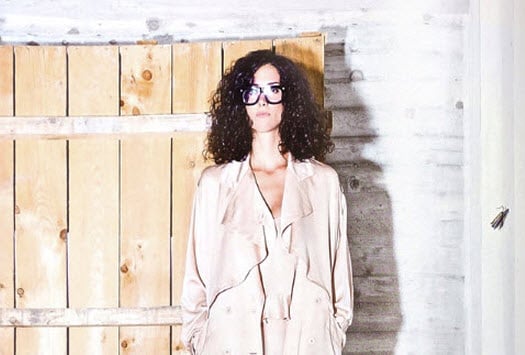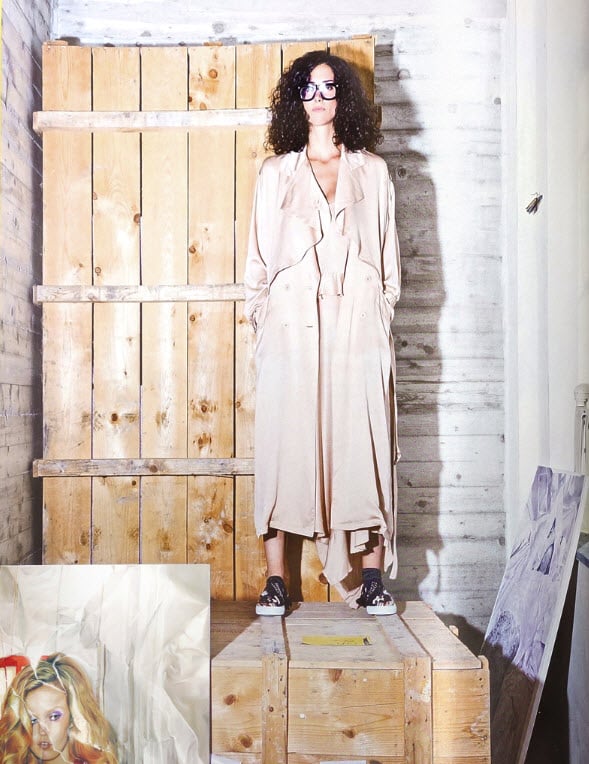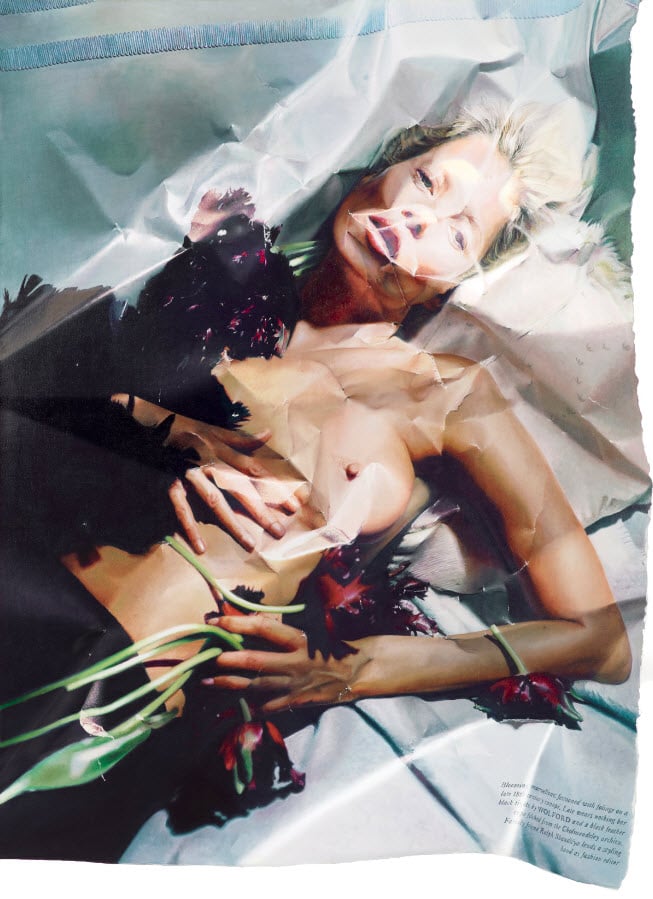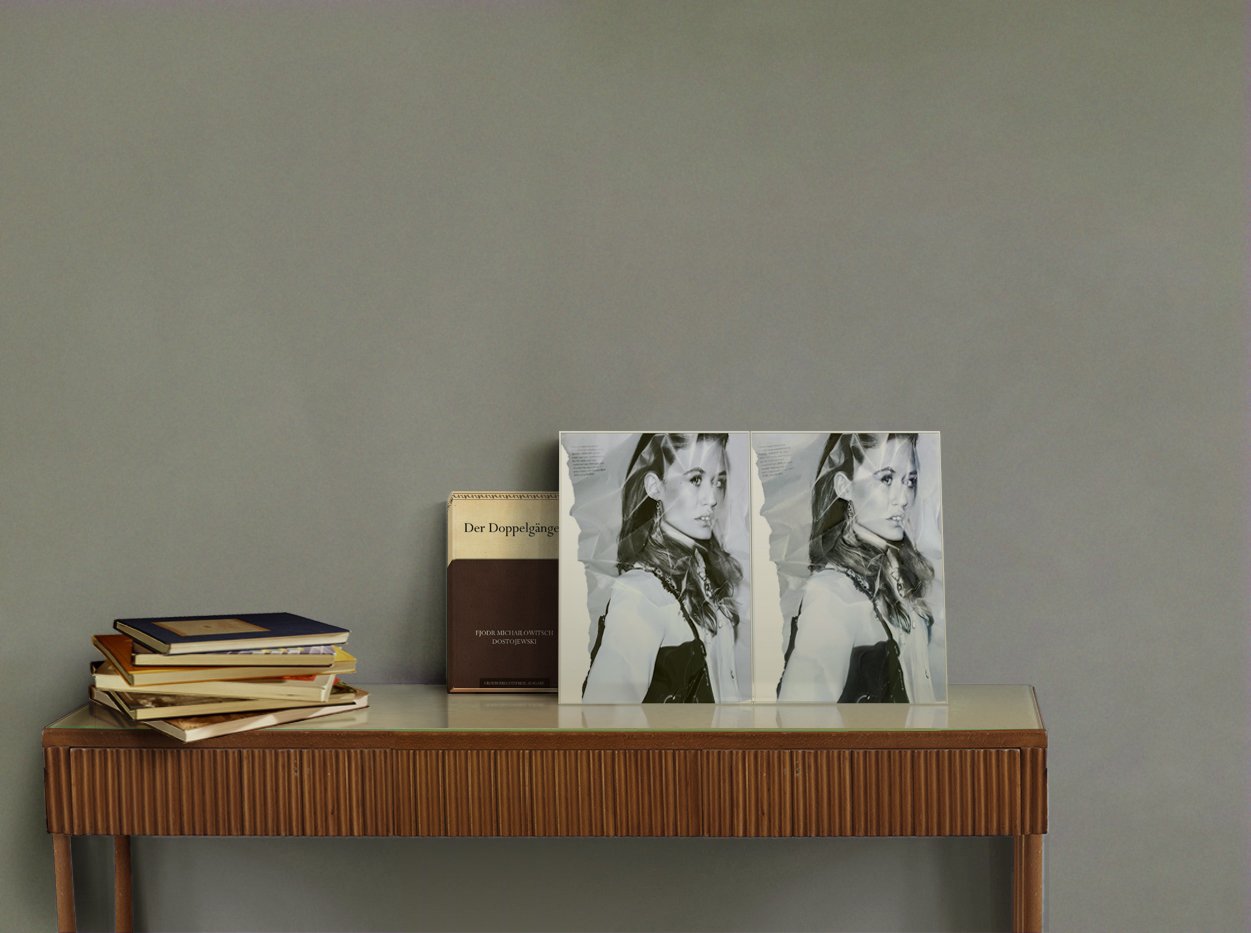Galleries
artnet Asks: Stefania Fersini on the Visual Bulimia of Our Time
The world is already full of objects. Why add more?

The world is already full of objects. Why add more?

Artnet News


Stefania Fersini portrait by Marie Claire Italia, March 2015. Courtesy of Stefania Fersini.
In the work of Stefania Fersini, the garbled, wrinkled faces of models stare sullenly back out at you. An appropriation artist, Fersini takes the advertising images that populate our contemporary landscape and musses them up a bit, crumpling the glossy magazine paper, blemishing the otherwise perfect faces, and then renders these new wrinkly versions meticulously in oil paint. Fersini has no interest in creating something new, she says, because after all, don’t we have enough stuff already? Her work comments on the excess and waste of our image-saturated world, and painting is a way for both the artist and the viewer to slow down, and take a longer read of the pictures we usually take for granted.
Fersini’s latest exhibition is located, appropriately enough, in Hollywood, and is on view at 101/EXHIBIT through October 17.

Installation view of Stefania Fersini’s solo exhibition at 101/EXHIBIT, Los Angeles. Courtesy of 101/EXHIBIT.
When did you know you wanted to be an artist?
When you are, you know, but it isn’t easy to accept. Ever since I was young, I needed to create. In the beginning I strove for originality, but the more I learned, the more difficult it became for me create something “new.” Originality might be impossible, and above all, meaningless. “The world is full of objects, more or less interesting, I do not wish to add anymore,” Douglas Huebler said in 1969. When I realized this, I started to be what I am. I was 29.
What are some things that inspire you?
I’ve always been attracted by the mirror, and after all, who isn’t? Because it’s about this world of body representation. Body ideals are determined mostly by the market and the media: advertisements present us with beautiful young women, dressed luxuriously and scented with sensuality and status symbols. They want us to buy creams for rejuvenation, diet pills, bags, shoes to fit the image they sell. We work tirelessly to be able to acquire it, the glossy world of appearances portray casings, fashion encasing bodies, bodies encasing emptiness. Paul Valery would say, “the ego is empty. It horrifies.”
This is the society in which I grew up: visual bulimia on Instagram, thoughts limited to 140-character tweets, superficial Facebook likes. There is no space and no time for depth, leaving only the surface. I’m built on an absent column, and it is this absent column—my uneasiness with the superficiality and the emptiness, and my phobia of the excess—that inspires me.

Stefania Fersini, LOVE n°08 AW 2012 pag 412 (2012). Oil on canvas, 35½ x 25½ in. Courtesy of Stefania Fersini.
Describe your creative process. What kinds of patterns, routines, or rituals do you have?
My practice continues to address the fundamental question of what it means to create pictures in an increasingly image-saturated world. In response, I choose not to add more images, but to reflect on the images we already have. I choose to be more conscious, to place limits on myself and my time.
So what I do is simply copy an image from a magazine and recreate it with my own talent, without any mechanical or technological support, with only my eyes, my hands and the pigments that nature gives us. My slow process of copying these images and transforming them to a different scale (life-size) allows me to produce only 12–15 images per year. Painting is my way to meditate, my therapy—like fasting—and the subjects in the paintings somehow mirror my malaise.
Tell us about the kind of art that you make. Are there any media you want to explore that you haven’t yet?
I’m not interested in any media by itself. I choose to paint because this is what I need to do, because I need it, really. Not just to express and communicate myself in the best way, but also because I’m fed up of going fast, and I need to paint to slow down. Sometimes to go forward you must go back.

Installation view of Copy of LOVE n°9 ss 2013 pag 259 (2013). Diptych of color coupler prints, books, and console. Courtesy of Stefania Fersini.
What has been the highlight of your career so far?
In April I met David LaChapelle at the opening of his solo show in Rome, “After the Deluge” at Palazzo delle Esposizioni. He told me he fell in love with my work and thanked me for choosing his picture The Last Supper as source material. My work addresses the subject of copyright, and his thanks meant a lot to me. It taught me something about the importance of what I do.
If you could have dinner with any three artists, living or dead, who would you choose?
Just 3?! Hmm… ok. Marcel Duchamp, Sherrie Levine, and Alighiero Boetti—who was born in Torino, where I am based.
What do you like to do when you are not making art?
My theory of “S”: Sleep well, enjoy the Sun, have Sex, play Sports.
If you weren’t an artist, what do you think you would be doing?
A hermit that meditates all day… or a good plastic surgeon.